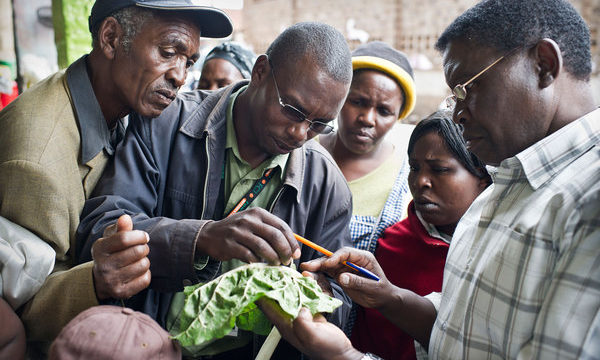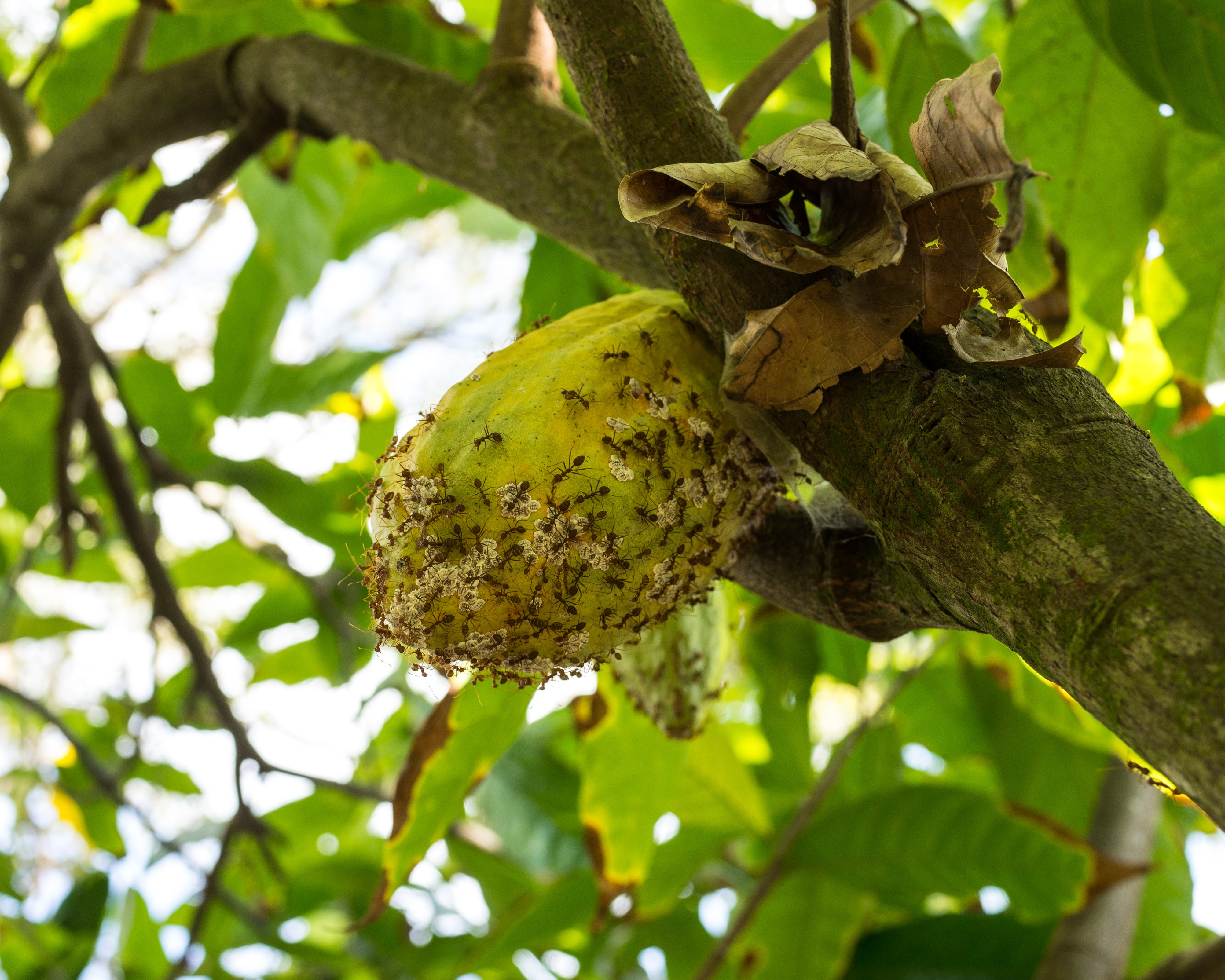
Fusarium head blight on wheat. Mary Burrows, Montana State University, Bugwood.org
Fusarium spp. (particularly F. graminearum) causes a serious disease on wheat called Fusarium head blight. The disease affects the quantity and quality of grain and under favorable weather conditions can cause more than 45% yield losses. Symptoms include the appearance of tan or brown discoloration on spikelets resulting in white, shriveled kernels. Such infected kernels are often contaminated with mycotoxins nivalenol, zearalenone and more commonly deoxynivalenol (DON). This mycotoxin is very toxic to humans and animals and the maximum tolerable daily intake is set at 1 ug/kg body weight.
Two recent studies in Japan and USA provide new insights to the timings of mycotoxin accumulation in wheat and strategies for separating infected kernels from healthy kernels during harvest.
Wheat plants are most susceptible to this fungus during flower and grain development stages. In an effort to understand mycotoxin accumulation at these stages, a group of researchers in Japan studied DON accumulation in wheat florets infected with F. graminearum at different intervals after anthesis (flower opening). They found that there was a significant increase in mycotoxin content at 20 days after anthesis (DAA) when infections occurred as early as 0 or 10 DAA. They also found that late infections, which occur at 20 DAA, can result in high mycotoxin levels in symptomless kernels. This 20 DAA time point corresponds to the late milk stage in wheat grain development. This information is particularly useful because current pre-harvest control tactics focus mainly on preventing infection during early flower stages but not late grain development stages.
In addition to control strategies in the field, post-harvest strategies are also important to minimize losses due to this disease. A group of researchers in Ohio studied the effectiveness of separating the lightweight infected kernels from healthy kernels during harvest. They did this by modifying the fan speed and airflow of the combine harvester and measuring damaged kernels and DON content in the resulting produce. They noticed a reduction in Fusarium damaged kernels and DON content in grain harvested using an output air speed of 30km/h and 27km/h (compared to the standard configuration of 13km/h). Although these higher airspeeds resulted in loss of some healthy grain, they found that this loss was balanced by improved price for the now clean produce. This method was particularly useful in grain with intermediate levels of disease incidence. This study thus provides yet another strategy for reducing mycotoxin content in produce although more research is warranted before field implementation.
References:
- Salgado, J. D.; Wallhead, M.; Madden, L.V.; Paul, P.A. (November 2011) Grain harvesting strategies to minimize grain quality losses due to Fusarium Head Blight in Wheat. Plant Disease. DOI: 10.1094/PDIS-04-11-0309
- Yoshida, M.; Nakajima, T. (August 2010) Deoxynivalenol and Nivalenol Accumulation in Wheat Infected with Fusarium graminearum During Grain Development. Phytopathology. doi:10.1094/PHYTO-100-8-0763
1 Comment
Leave a Reply
Related News & Blogs
Taro caterpillar outbreak in central India
The Taro caterpillar (Spodoptera litura), is a pest of many crops across Asia and Oceania. This species is generally well-controlled by natural enemies. Therefore, outbreaks in India’s Madhya Pradesh over the past two years are particularly notable. Sp…
13 March 2023




[…] spp. causes a disease called Fusarium Head Blight on wheat that in addition to direct yield losses produces a mycotoxin called deoxynivalenol (DON), toxic to humans and animals. The researchers found that this particular earthworm reduces the […]